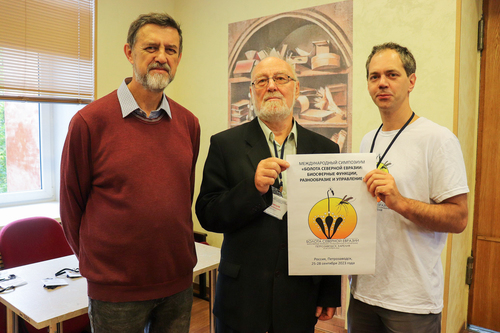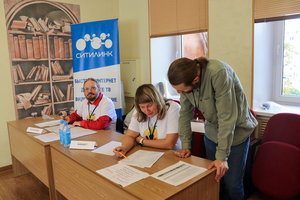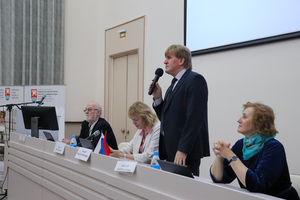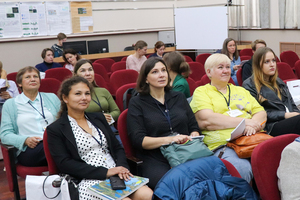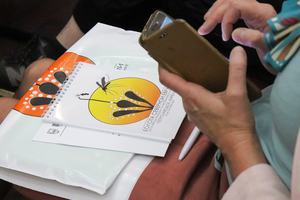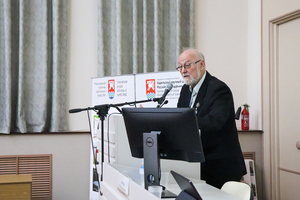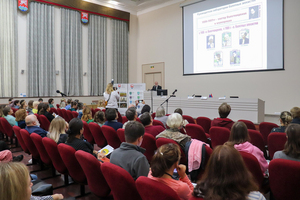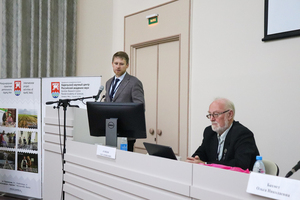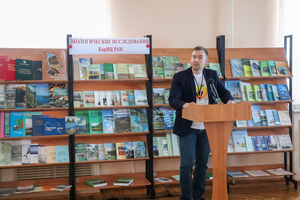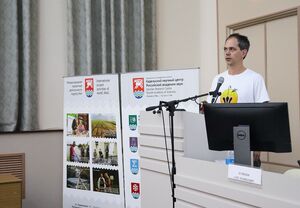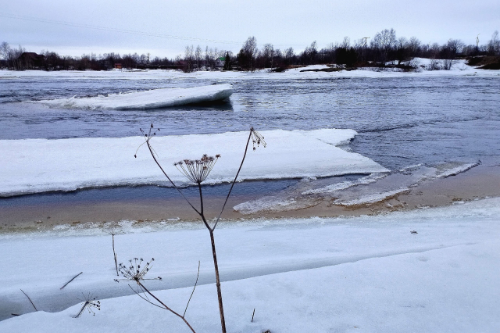Mire ecosystems occupy huge areas in the taiga and tundra zones of Northern Eurasia. They provide unique biospheric functions, contributing greatly to carbon cycling and regulation of atmospheric greenhouse gas content. Mire have a pronounced effect on the economic development of northern regions, making the development of new territories more challenging and costly, while at the same time acting as sources of peat, berry and medicinal plant resources, valuable hunting grounds, and tourism destinations. The importance of studying mire ecosystems is beyond doubt.
During the opening of the symposium, its guests were greeted by KarRC RAS Director General, RAS Corresponding Academician Olga Bakhmet. She remarked on the intensity of the program.
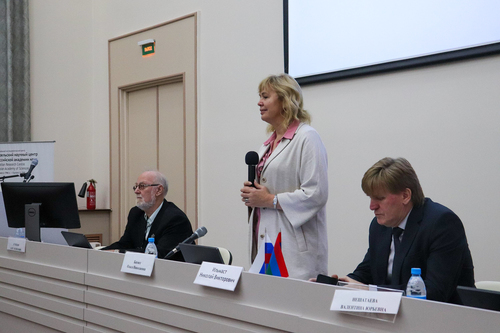
Guests were welcomed by KarRC RAS Director General, RAS Corresponding Academician Olga Bakhmet
– Quite a number of papers deal with classical issues of mire ecosystem functioning and transformation. There are also topical presentations related, in particular, to the carbon agenda. Carbon pools and fluxes have been studied for a long time and successfully, but the demand for this information is especially high today, - said Olga Bakhmet.
Karelian mire science school is known far beyond our region, the results produced by Karelian scientists are published in reputable Russian and foreign scientific journals. One of the tasks for specialists today is estimation of carbon cycling in mire ecosystems within the unified national system for monitoring climate-active substances which is being created in Russia.
– Since Eurasia has vast wetlands, it is natural that the issues of mire system functioning, protection and management are important tasks for both applied and theoretical science, - emphasized Nikolai Ilmast, Director of the Institute of Biology KarRC RAS, at the opening ceremony and wished his colleagues productive work.
The audience was welcomed by the Secretary for Science of the Russian Botanical Society (RBS) Valentina Neshataeva. She acknowledged the active work of the Karelian branch of RBS, as well as the role of the mire science section within the society.
– It's always on the radar, organizes many conferences, conducts excursions to mire sites, popularizes science, works with the youth. No wonder there are so many young faces in the audience, which is very important. Our task today is to attract new talents to botany, including mire science, - Valentina Neshataeva noted.
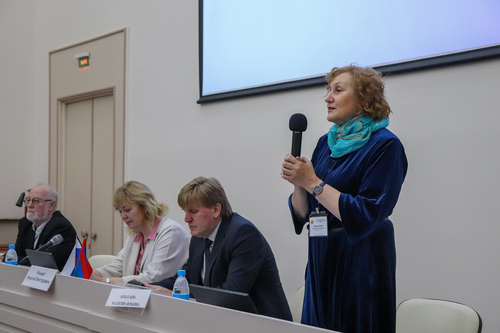
Secretary for Science of the Russian Botanical Society Valentina Neshataeva speaking
The plenary session started with a talk by Chief Researcher at the Mire Ecosystem Laboratory of the Institute of Biology KarRC RAS Oleg Kuznetsov. He presented the main results of studies by the Karelian mire science school.
The scientist informed that mires of the European North have been researched actively since the beginning of the 20th century. Mires have been comprehensively studied in Karelia by the Mire Ecosystems Laboratory of the Institute of Biology KarRC RAS since 1950. Multifaceted studies by several generations of researchers have produced theoretical and methodological developments, detailed classifications of mire areas, vegetation, peat and peat deposits in the region. Peat cadastres for the republic and recommendations on using peatlands in agriculture are of practical importance.
In order to conserve the high diversity of mire ecosystems in the region, a network of protected areas of different statuses, both mire-focused and integrated ones, has been created on the basis of scientific feasibility studies produced by the laboratory. For more than 30 years, integrated research has been carried out within a range of international projects and programs.
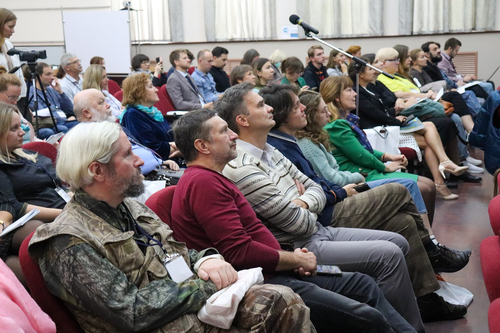
The geography of the symposium participants covers regions from the Far East to Kaliningrad
The symposium will include a plenary session, two thematic sections, poster presentations and field excursions to research sites in the Kondopoga and Pryazha districts of the republic.
Photos by M. Dmitrieva / KarRC RAS Science Communications Service




